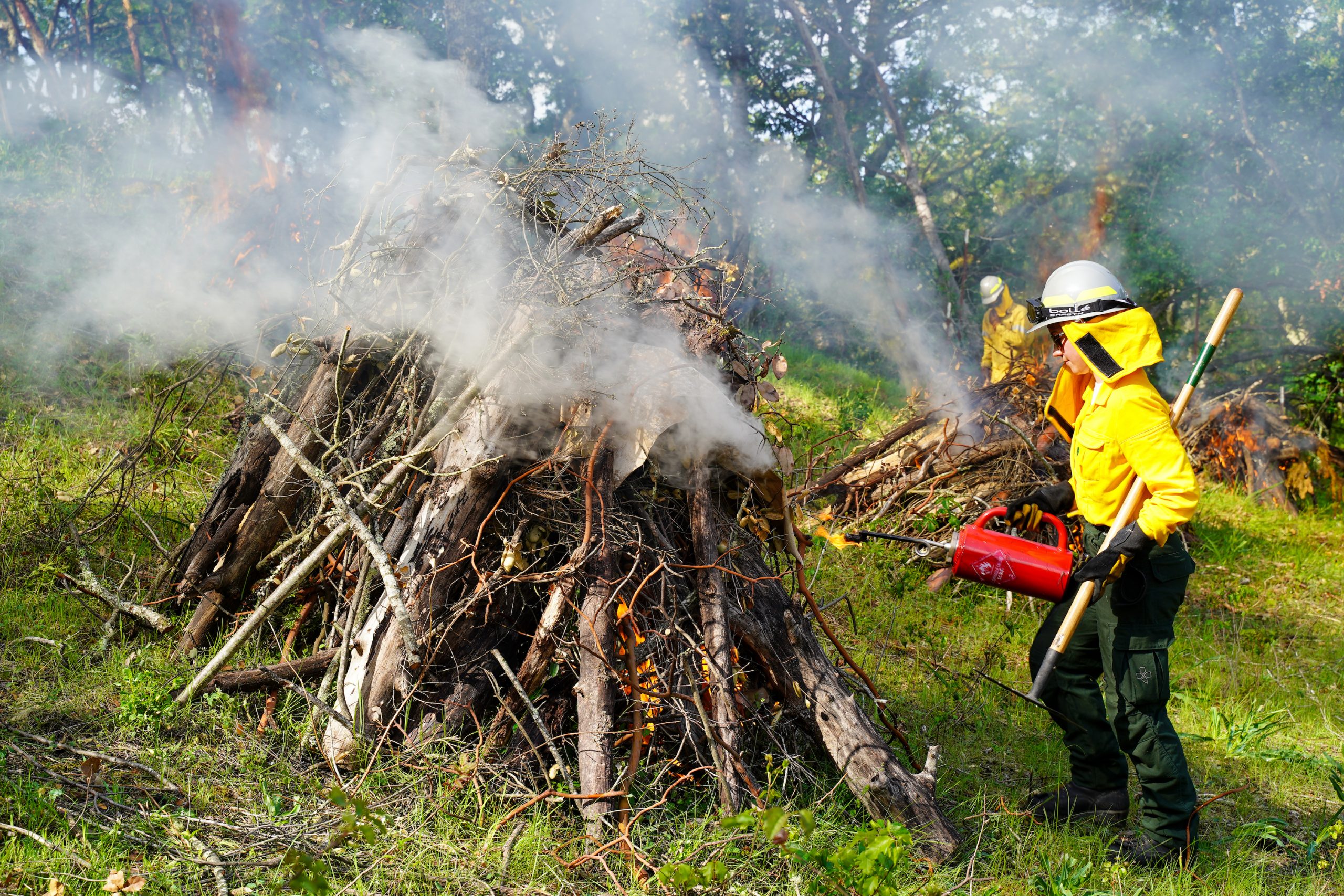 The Tubbs and Nuns fires fundamentally reframed how Regional Parks approaches its day-to-day business. More than ever before, Regional Parks operates with an emphasis on climate-adaptive infrastructure and trails, increased grazing and vegetation management practices, including robust prescribed burns, and has redoubled efforts to address the root of climate change by identifying and reducing the department’s greenhouse gas emissions and the burning of fossil fuels.
The Tubbs and Nuns fires fundamentally reframed how Regional Parks approaches its day-to-day business. More than ever before, Regional Parks operates with an emphasis on climate-adaptive infrastructure and trails, increased grazing and vegetation management practices, including robust prescribed burns, and has redoubled efforts to address the root of climate change by identifying and reducing the department’s greenhouse gas emissions and the burning of fossil fuels.
Many Regional Parks staff now go through comprehensive wildland firefighter training – not only to be better prepared in the event of another major fire – but also to improve cross-agency cooperation and coordination between parks staff and the first responder and fire agency partners.
Since 2017, the Natural Resources team has grown exponentially, expanding capacity for greater vegetation and fuels management activities across Sonoma County’s 16,000+ acre park system. The department expanded livestock grazing in parks to help reduce invasive grasses and shrubs, and worked closely with Cal Fire and local fire districts to create shaded fuel breaks, which reduce low-to-the-ground fuels, but retain larger trees for shade and wildlife habitat. As members of the Sonoma Valley Wildlands Collaborative, Parks staff are also being trained to conduct more prescribed burns – a historic cultural practice that restores ecosystem health, helps manage invasive vegetation and greatly reduces wildfire risk.
“When it comes to park infrastructure and improved public access, we’re taking the initiative to employ climate-adaptive design that can support fire fighting as well as prescribed burn operations,” said Regional Parks Director Bert Whitaker.
In the simplest sense, climate-adaptive design means adjusting construction materials used in park buildings to be more resilient to future wildfires, such as replacing wooden retaining walls and restrooms with fire-proof materials like metal or stone. It also means experimenting with new designs, by making bridges and culverts more resilient to fire, allowing trails and roads to be used during the fire fight, improving its efficiency and efficacy. Parks and open spaces made more resilient to future wildfires offer greater protection to surrounding neighborhoods as well as to expedite park re-openings following fires.
Finally, 2017 represented a sea change in county residents’ relationship with fire and a growing recognition of wildfire’s natural role in Sonoma County’s diverse ecosystems. To help educate, provoke a public conversation around this culture shift, and raise awareness about the county’s evolving relationship with fire, Regional Parks staff also lead regular guided public programs and field hikes exploring nature’s recovery in a burned landscape, and natural and community resiliency. To find out more about these field hikes and other public programs, go to parks.sonomacounty.ca.gov/visit or call (707) 565-2041.
